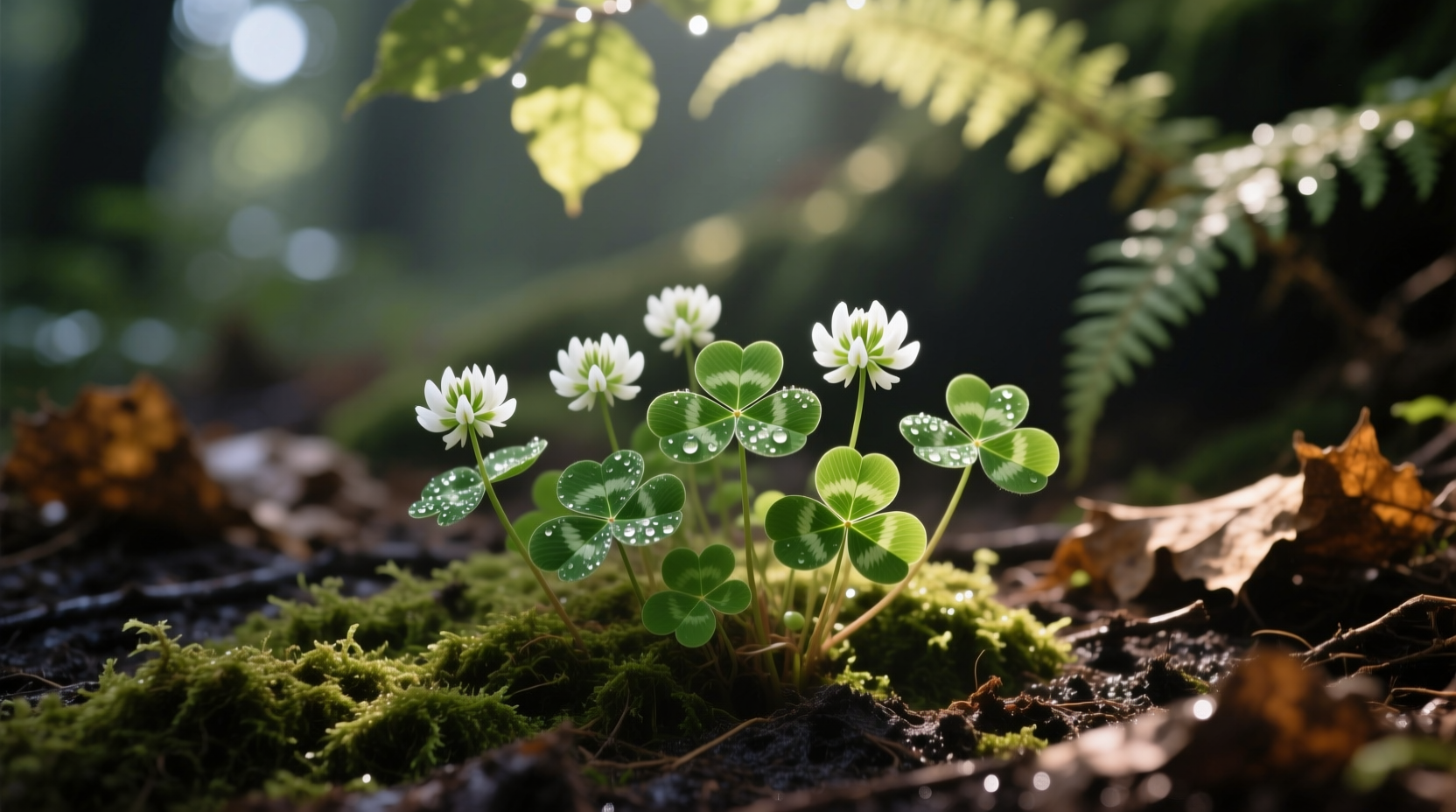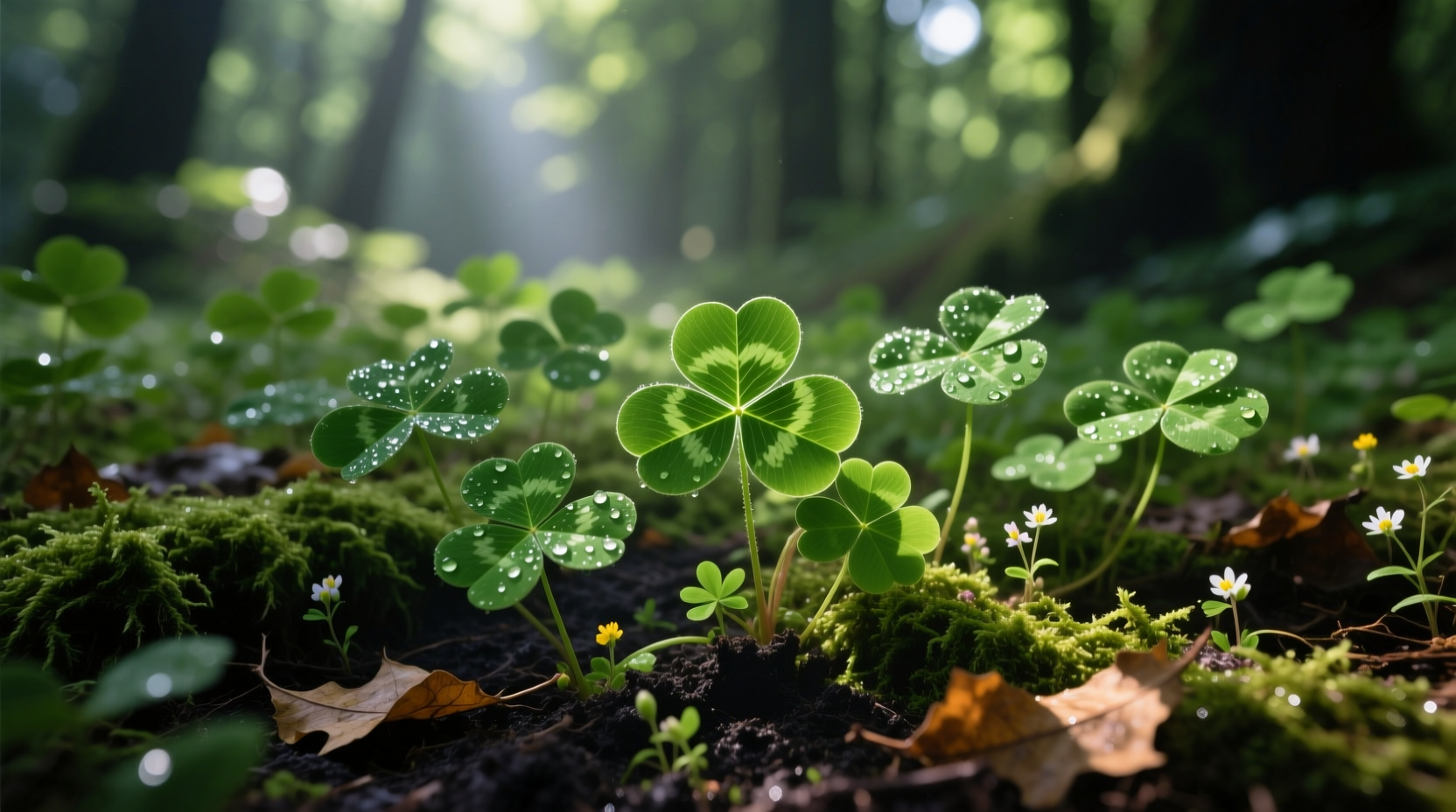Yes, certain types of clover can grow in partial shade, but they generally prefer full sun. White clover (Trifolium repens) and microclover tolerate light to moderate shade (3-6 hours of direct sunlight), though their growth will be less vigorous compared to sunny locations. For dense shade conditions, consider alternative ground covers as most clover varieties struggle with less than 3 hours of direct sunlight daily.
Understanding Clover's Light Requirements: What Gardeners Need to Know
When planning your garden or lawn renovation, understanding whether will clover grow in shade is crucial for successful establishment. Many homeowners and gardeners are turning to clover as a sustainable alternative to traditional grass lawns, but shade conditions can significantly impact its performance.
How Much Sun Does Clover Really Need?
Clover is naturally adapted to open fields and meadows where it receives abundant sunlight. As a member of the legume family, it relies on photosynthesis to fix nitrogen in the soil—a process that requires adequate light exposure. While clover can survive in partial shade, its ability to thrive depends on several factors including the specific variety, soil conditions, and the intensity of available light.
| Clover Variety | Minimum Sun Requirements | Shade Tolerance Level | Best For |
|---|---|---|---|
| White Clover (Trifolium repens) | 4-6 hours | Moderate | Light to moderate shade areas |
| Microclover | 3-5 hours | Moderate | Lawns with partial shade |
| Red Clover (Trifolium pratense) | 6+ hours | Low | Full sun locations only |
| Crimson Clover | 6+ hours | Very Low | Sunny gardens and fields |
This comparison of clover varieties that tolerate shade shows why selecting the right type matters for shaded areas. According to research from the Penn State Extension Service, white clover demonstrates better shade adaptation than other varieties due to its lower growth habit and ability to spread through stolons.
Defining Shade Levels for Clover Growth
Not all shade is created equal when considering how much sun does clover need. Understanding these distinctions helps set realistic expectations:
- Light Shade (6+ hours of sun): Clover grows well with minimal impact on density
- Moderate Shade (3-6 hours of sun): White clover and microclover will grow but with reduced density and flowering
- Dense Shade (less than 3 hours): Most clover varieties struggle to establish and maintain coverage
University of Minnesota Extension notes that shade conditions beneath deciduous trees present seasonal challenges—more light in spring before leaf-out, then significantly reduced light in summer.
Practical Tips for Growing Clover in Shady Areas
If you're determined to grow clover in shady areas, these evidence-based strategies improve your chances of success:
- Select appropriate varieties - Microclover generally performs better in partial shade than standard white clover due to its smaller leaves and lower growth habit
- Adjust planting density - Increase seeding rates by 25-30% in shaded areas to compensate for reduced growth
- Manage tree competition - Prune lower branches to allow more light penetration ("limbing up" trees)
- Optimize soil conditions - Shade areas often have poorer soil; amend with compost to improve fertility
- Reduce mowing frequency - Allow plants to grow taller to capture more light

When Clover Won't Work: Alternative Ground Covers
For areas with dense shade where does white clover grow in shade isn't viable, consider these alternatives that perform better in low-light conditions:
- Wild ginger (Asarum canadense) - Native ground cover for deep shade
- Creeping jenny (Lysimachia nummularia) - Tolerates partial to full shade
- Allegheny spurge (Pachysandra procumbens) - Excellent for dense shade
- Epimedium - "Barrenwort" that thrives in woodland settings
According to the USDA Forest Service, these native alternatives often establish more successfully in heavily shaded areas than non-native clover varieties.
Common Mistakes to Avoid When Planting Clover in Shade
Many gardeners make these errors when attempting to grow clover in shady areas:
- Planting standard white clover instead of shade-tolerant varieties
- Expecting the same density as in full sun locations
- Overwatering (shade areas retain moisture longer)
- Planting too late in the season (shaded areas warm more slowly in spring)
- Not adjusting expectations for reduced flowering in shade
Remember that even the most shade-tolerant clover varieties will produce fewer flowers in shaded conditions—a trade-off for having green coverage where grass struggles.
Seasonal Considerations for Shade-Grown Clover
The success of will clover grow in shade varies throughout the year. In spring, before trees fully leaf out, clover in shaded areas may receive adequate light. As summer progresses and tree canopy thickens, light levels decrease significantly. This seasonal variation explains why some gardeners report success with clover in spring that diminishes by midsummer.
For best results with clover varieties that tolerate shade, plant in early spring to give plants maximum establishment time before summer shade intensifies. Fall planting can also work well in partial shade areas where trees lose leaves, providing several months of adequate light before the next summer's dense canopy.











 浙公网安备
33010002000092号
浙公网安备
33010002000092号 浙B2-20120091-4
浙B2-20120091-4